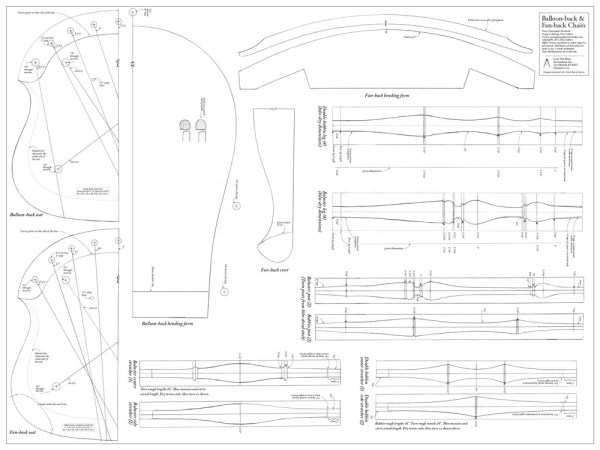For those woodworkers who prefer full-size plans, we now offer plans for the two chairs featured in Peter Galbert’s book “Chairmaker’s Notebook.”
The plans are $25. If you order them before July 5, 2015, you will receive free domestic shipping. You can place your order here. The first batch of plans will ship out to customers about June 15.
The plans feature handmade full-size drawings of the following components of the fan-back and balloon-back chairs:
- Full-size turning patterns of legs, stretchers and posts – both bobbin and baluster forms.
- Full-size drawings of the seat shapes that feature all mortise locations, sightlines and resultant angles.
- The fan-back crest shape and the bending form required to make it.
- The profiles of on the back of the balloon-back chair and the bending form required to make it.
All the drawings are fully dimensioned with easy-to-read call-outs. The plans for both chairs come printed on a single 36” x 48” sheet on white, #20 paper typically used for engineering prints. The plans are folded to a 9” x 12” size and ship in a rigid cardboard mailer.
Like all Lost Art Press products, these plans are produced and printed entirely in the United States of America.
One caveat: While these plans provide the shapes of all the components, you will need “Chairmaker’s Notebook” to build the chairs exactly as Pete describes. These plans are a supplement to – not a substitution for – the book.
— Christopher Schwarz
P.S. We will be offering these plans to our retailers, but we do not know at this time which, if any, will carry the plans.







